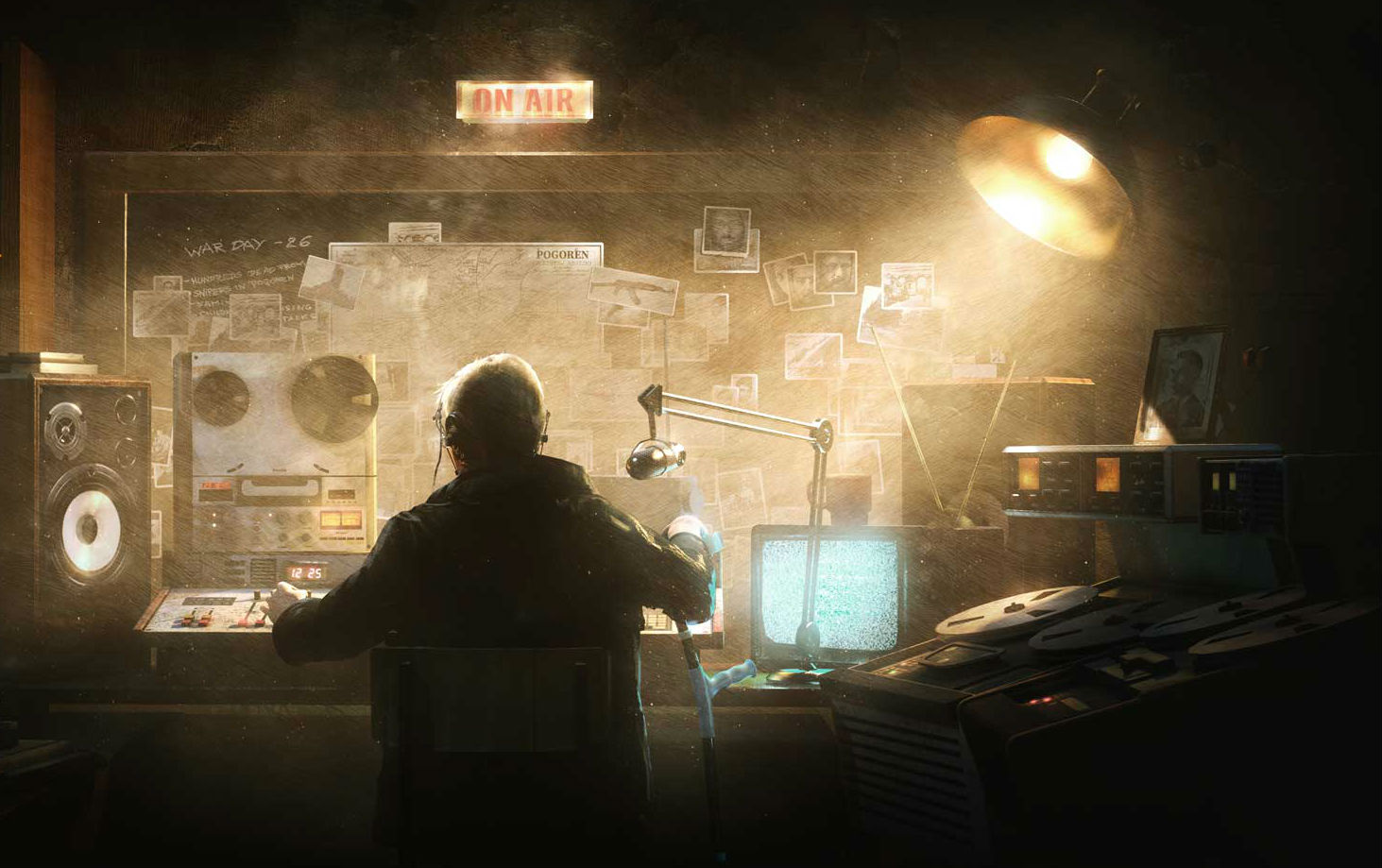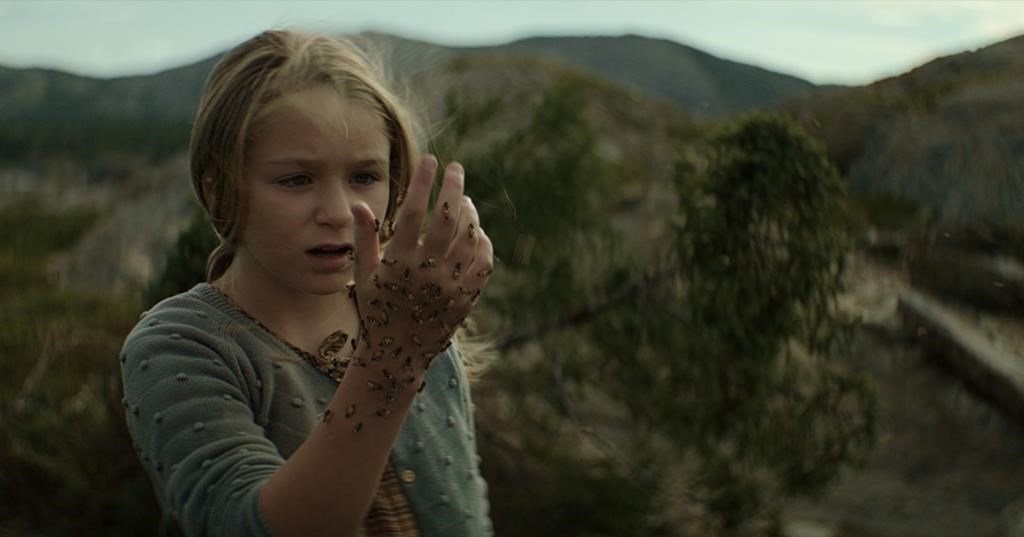Reviews
[Review] ‘This War of Mine: The Last Broadcast’ is Emotionally Resonant and Oppressively Grim

A new impactful story of survival builds on the base game’s subtle handling of the horrors of war. Read all about it in our This War of Mine The Last Broadcast review.
Though This War of Mine stands tall amongst its genre peers on the substantial merit of its robust survival mechanics alone, it’s arguably the very human stories, trials and tribulations that serve as the beating heart for what is ostensibly 11-Bit Studios magnum opus.
With a narrative scribed by Meg Jayanth, whose keen penship drove Inkle’s 80 Days globetrotting adventures to such superlative heights, the second Stories expansion The Last Broadcast deftly weaves a story that not only encapsulates the survivalist struggles of the base game, but also one that examines the value and role of truth in a time of war.
Immediately the setup for The Last Broadcast is interesting. Revolving around crippled radio operator Malik and his wife, Esma, the former struggles to impart life-saving wisdom to the survivors of the Grazni Civil War, while the latter ventures out into the outside world to scavenge for supplies and obtain the news that her husband so desperately needs to broadcast.

The news that you can broadcast can come from multiple sources too. Though mostly uncovered through Esma’s journey into the wider world, the visitors who knock on your door can also now be quizzed for the latest developments, with such news allowing you to do everything from taking advantage of supply and demand for certain resources in favorable trade negotiations, to providing ample notice regarding troop movements.
With the attainment of news comes the notion of responsibility – do you impart the news to Malik, allowing him to broadcast out this new information, or, do you withhold it? Depending on how you handle information, certain characters might react to you differently (or not appear at all), while the balance of your choices are brilliantly brought to bear in one of The Last Broadcast’s multiple endings.
The fact that The Last Broadcast begins with not just two survivors, but whereupon only one of them is able-bodied lends the proceedings quite the unexpected dynamic. As the sole scavenger in the group, the physical demands that are put onto Esma are far beyond that which would be normal.
As such, The Last Broadcast forces long-time This War of Mine players to think much differently than they otherwise would do. Because Esma is the only individual capable of scavenging, she cannot rest at home at night and so instead must catch up on her snoozes during the day – a problem which is compounded by the fact that if she indulges in any strenuous physical activity, as this makes her rest all the more important.

On the other side of the coin, Malik’s crippling disability is debilitating to that point that he can only roam around a single level in the house. Without the ability to move up or down floors, he must also be fed, treated and entertained by Esma – something which not only exacerbates the tremendous strain that already exists on her time.
Fortunately though, unlike the base game, The Last Broadcast begins with our survivors in a considerably large house that already has a lot of amenities, utilities, and loot to collect. Though this house also presents a unique challenge in the form of a rockfall which prevents immediate access to a pre-prepared herb garden; a conundrum that is soon remedied by fashioning a pickaxe to clear the way.
As a result, not only does the unique situation of Malik and Esma lend itself to refreshing play and a reorganization of the traditional This War of Mine mindset, but so too do the digs that couple inhabit present a meaningful challenge that deftly compliments what The Last Broadcast has wrought elsewhere in its design.
In addition to emphasizing the human element that has defined This War of Mine, The Last Broadcast also packs in a bunch of new base content. Certainly, the much larger scope when compared to the previous DLC, A Father’s Promise, makes The Last Broadcast feel like much more akin to a banquet, rather than the mouldering scraps one might expect to find in one of the game’s long-abandoned shelters.

Beyond the weight of The Last Broadcast’s narrative and the new features, Pogoren, the city that served as the backdrop to The Grazni Civil War in the base game, has also been enlarged with new locations to explore and a range of new characters to interact with. A tense cover to cover sprint through a park under the watchful eye of a sniper proves to be a particular highlight that doubles down on This War of Mine’s penchant for getting the blood pumping, as Esma puts her life on the line to scavenge both resources and news alike. Celebrating the fourth anniversary of This War of Mine with this expansion, 11-Bit Studios has managed to both properly honor the spirit of the base game, and meaningfully iterate upon it with this latest DLC offering. Emotionally resonant, oppressively grim and generously stuffed with emergent possibility and multiple endings, The Last Broadcast widens the scope of The Grazni Civil War and is essential for both owners of This War of Mine and fans of supremely well-written survival narratives.
Here’s hoping that the third, and as yet unannounced story expansion for This War of Mine follows much more rigidly in the footsteps of the game’s sophomoric DLC offering, rather than its inaugural venture into the Stories format.

This War of Mine The Last Broadcast review code provided by the publisher.
This War of Mine The Last Broadcast is available on PC from November 14.

Reviews
‘The King Tide’: An Island Town Rots with Moral Decay in Canadian Folk Horror Fable [Review]

The opening scenes of director Christian Sparkes’ The King Tide set an ominous tone: a powerful storm takes down the power lines of a small island town as a pregnant woman loses her child while her dementia-suffering mother sits nearby. In the morning, as the town takes stock of the damage and the power is restored, a surprising discovery is found in an overturned boat in the harbour: a baby girl…with the ability to heal.
Writers Albert Shin and William Woods, working from a story by Kevin Coughlin and Ryan Grassby, treat the story as something of a morality tale mixed with a fable. Following the cold open, the action jumps ahead 10 years at a point when the unnamed island (the film was shot in Newfoundland, Canada) is thriving. The fishing is bountiful, the islanders are self-sufficient and have cut ties with the mainland, and most everyone is happy.
As characters are prone to saying, it’s all thanks to Isla (Alix West Lefler), the miracle baby who has grown up worshipped by the islanders. While Mayor Bobby Bentham (Clayne Crawford) and his wife Grace (Lara Jean Chorostecki) endeavor to raise Isla like any other little girl, the reality is that the island’s entire ecosystem revolves around her miraculous powers. It is only because of Isla that they survive; every aspect of their lives – from medicine to food – relies on her.
Each day the citizens line up for their allotted time with the young girl – be it to stave off breast cancer, like Charlotte (Kathryn Greenwood), or recover from another night of heavy drinking like former doctor, Beau (Aden Young). There’s even a predetermined schedule for when she will go out on the boats and use her power to lure fish into the nets.

One fateful day, Bobby succumbs to peer pressure and alters Isla’s schedule at the last minute to accompany cod fishermen Marlon (Michael Greyeyes) and Dillon (Ryan McDonald). A childish game with fatal consequences is played, but with Isla indisposed, a young boy, who would have otherwise been fine, dies. And while the rest of the community grieves, it is Isla who is completely shaken and, unexpectedly, loses her powers.
Suddenly the entire balance of the island is thrown off. Folks like Grace’s mother, Faye (Frances Fisher), who relied on Isla to keep her dementia at bay, suddenly reckon with mortality, while the food security of the town is called into question. Faye’s late-night “support group” meetings take on an urgent and secretive tone and the townspeople claim ownership of Isla’s time despite Bobby and Beau’s protests that she needs rest to recover from her trauma.
Like the best thrillers, the politics and personalities within the community come into play as morals are compromised and the good of individuals vs the collective is played out in increasingly desperate situations. The King Tide excels because it is interested in exploring the competing motivations of the townspeople, while also resolutely refusing to paint anyone as inherently good or bad. These are desperate people, determined to remain independent and free from outside interference, while protecting their trapped-in-amber way of life.

These developments work because there’s a humanity to the characters and The King Tide wisely relies heavily on its deep bench castoff character actors to drive the conflict. Crawford is the de facto protagonist of the ensemble and he’s also the most straightforward character: Bobby is a good man and a loving father, but he’s no white knight. At several points in the film, his willingness to acquiesce to the demands of the community and retain his power causes events to spiral further out of control.
Even more fascinating are Grace and Faye, two commanding women whose capacity for maternal love is matched – or eclipsed – by their own self-interests. A mid-film discovery about Isla’s power reframes Grace’s priorities, ultimately pitting her against her husband. As a result, Grace is incredibly compelling and frustrating (in a good way) and Chorostecki, who has done great genre work on both Hannibal to Chucky, plays the moral ambiguity exactly right. Grace is a fascinating and flawed human character in a film filled with them.
The same goes for Fisher, who deftly balances Faye’s grandmotherly love for Isla with the needs of the community and, by extension, her own health demands. In the hands of a lesser performer, it would be easy to hate Faye for her actions, but Fisher’s performance perfectly captures the fierce determination and fear that drives the island’s matriarch.
Finally, there’s Aden Young, The King Tide’s secret weapon. The ten-year jump reveals that Beau has undergone the most significant transformation: while everyone else has benefitted from Isla’s powers, her presence has eliminated the need for a doctor. With the clinic effectively shuttered, Beau has become an alcoholic; a shell of his former self with no purpose.
Like Bobby, Beau is the easiest character to root for because of his selfless desire to protect Isla, but Young (renowned for his work with Crawford on Rectify) unlocks the character’s tragic pathos and, in the process, becomes the film’s emotional anchor.

Framing the moral decline of the islanders and anticipating the unexpectedly devastating climax is the natural beauty of Newfoundland. As shot by cinematographer Mike McLaughlin, there’s a steely beauty to the geography, resplendent with rocky cliffs, pounding surf, and gusty bluffs that reinforce the islanders’ isolation.
There’s a fierce pride in their struggle to survive independently, evident in the simple lodgings and the antiquated alarm bell that is rung whenever fishing ships from the mainland stray too close. It’s a chilly, atmospheric calling card for one of the most picturesque provinces in Canada, but it is a perfect complement for the folk horror narrative.
Armed with serene, beautiful cinematography, murky moral developments, and a deep bench of talented character actors, The King Tide is a quiet gem that demands to be seen. It’s one of the year’s best genre films.
The King Tide is in theaters April 26, 2024.














You must be logged in to post a comment.